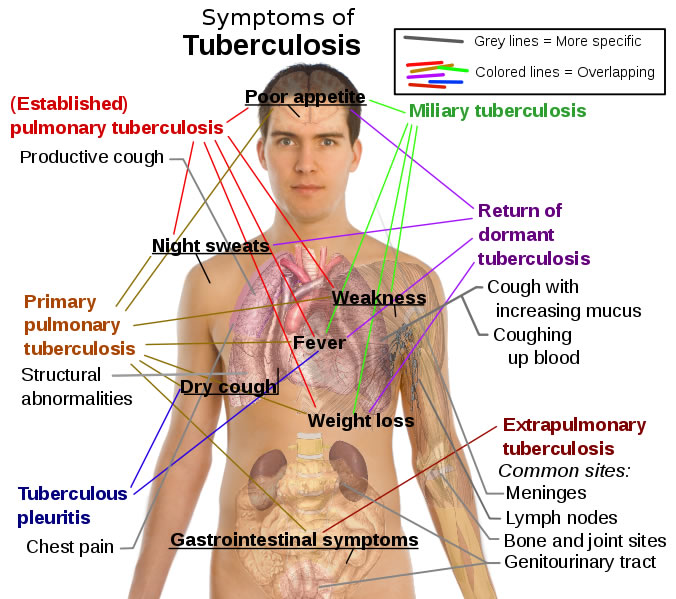Tuberculosis (TB) is a disease that is claiming millions of lives each
year. It is believed that about one third of the world’s population is infected
and it is currently one of the leading causes of death in the world. TB is
caused by bacteria called Mycobacterium
tuberculosis. People can be infected by the bacteria and not even know that
they have the disease. Some of the signs and symptoms include coughing that
lasts longer than 3 weeks, productive cough (blood & mucus), weight loss, chest
pains, sweating at night, and weakness. In most cases, symptoms do not appear
until the victim’s immune system weakens, such as in people with HIV and people
of old age.
M.
tuberculosis is an airborne disease, where people can be
infected when an infected person coughs, sneezes, or talk. The bacteria are ingested
by alveolar macrophages but they are able to survive and multiply
intracellularly by inhibiting phagolysosome production. Granulomas (tubercle) form
from the accumulation of activated macrophages and other mononuclear
phagocytes, which surrounds the infected macrophages with the bacilli.
Granulomas contain and inhibit the growth of the bacilli. However, when the
immune system of an infected person weakens the walls of the granuloma loses
structural integrity and ruptures, allowing the bacilli to escape and spread to
other organs.
References
Nancy
A. Knechel. Tuberculosis: Pathophysiology, Clinical Features, and Diagnosis.
CriticalCareNurse 2009; 29(2).
Lakshimi
PS, Verma D, Yang X, Lloyd B, Daniell H. Low Cost Tuberculosis
Vaccine Antigens
in Capsules: Expression in Chloroplasts, Bio-Encapsulation, Stability,
and Functional Evaluation In Vitro. Plos One
2013; 8(1).


No comments:
Post a Comment